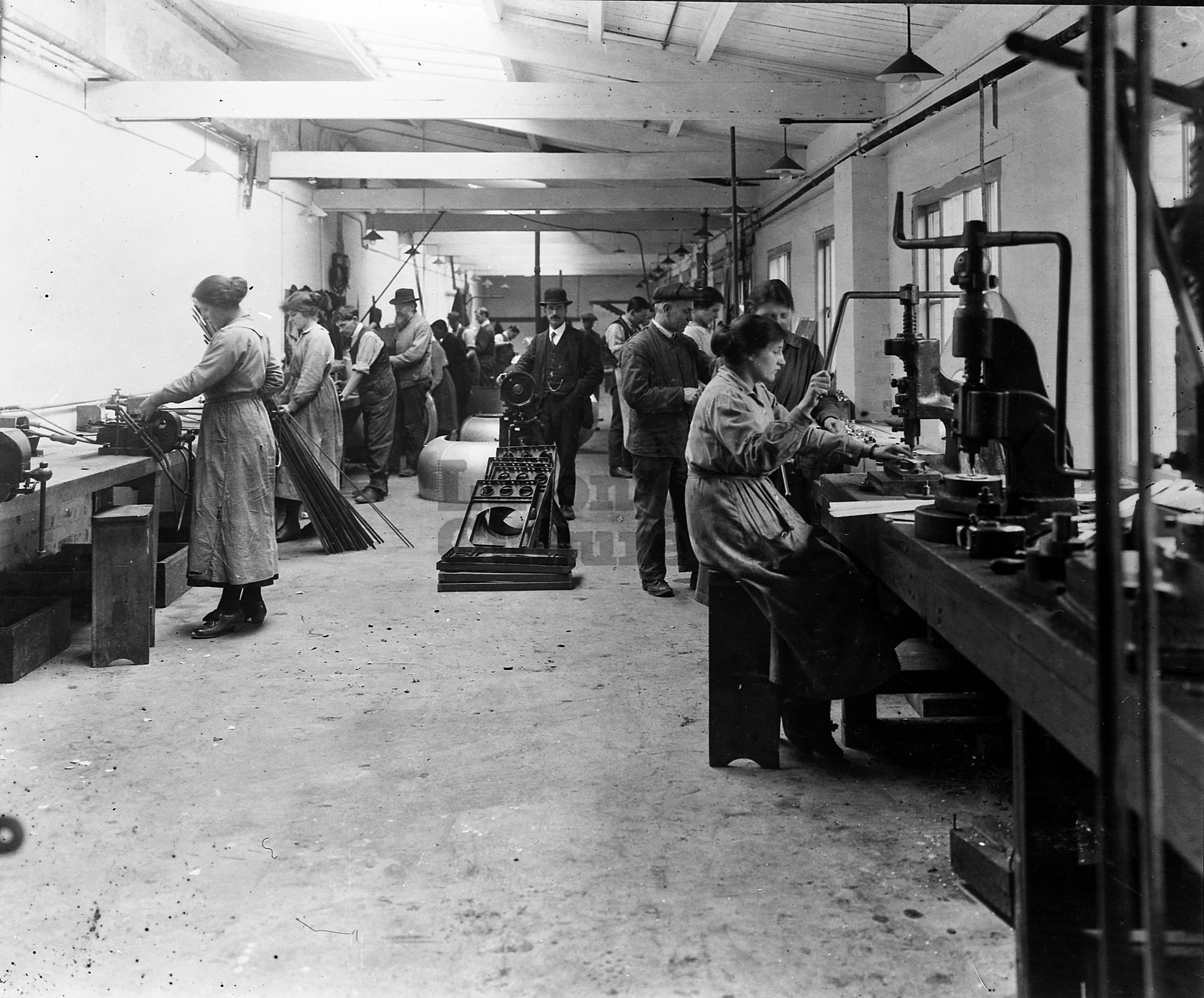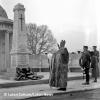Objects and Places

This page contains a list of Objects and Places that are associated with Luton's Great War 1914-1918. They have been scanned/photographed and uploaded by project volunteers and members of the public. Many of these objects are linked to individuals and/or events, and form part of a larger story.

The Bishop of St Albans, the Rt Rev Michael Furze, consecrating the newly erected memorial to more than 7,000 men of the Bedfordshire Regiment killed in World War One.

Among the hundreds of wounded soldiers who were cared for at Wardown House, first as a military-run hospital and later as a Red Cross Voluntary Aid hospital during World War 1, a few (and perhaps their carers) left their mark on the building.

Among the World War One memorabilia in the possession of Wardown House Museum is this box created by a German prisoner of war at Camp Blandford in Dorset.

A third class return ticket which allowed one week's travel between Dunstable and Chaul End on the Great Northern line during World War One. They were available to munition workers at the George Kent Fuse [Fuze] Works at Chaul End, where a temporary halt was erected to cater for them.

Not now a tangible object but an image from The Luton News created by one of its photographers to commemorate Remembrance Day 1935. A powerful and evocative representation that deserves a place on this site, however.

An example of an honourable discharge certificate issued to disabled soldiers who had served in the Great War. It is among the WW1 items held at Wardown House Museum.

The lych gate of Holy Trinity Church, Biscot, bearing testimony to its planned role as a war memorial.

The war memorial that stood at Chapel Street Wesleyan Methodist Church, as photographed by Frederick Thurston. It was unveiled by the Rev A. Stanley Bishop, a former minister of the circuit, on September 22nd, 1920.

At the end of the 1913-14 season, Luton Town FC (pictured above) had won promotion to Division One of the Southern League, finishing runners-up to Croydon Common in the final season of peacetime.

Reminders from the Wardown House Museum collection of fateful July 19th, 1919, and the Peace Day riots that resulted in the burning down of the 1847 Town Hall.

After World War One broke out in 1914 the need was not only for men to fight in the trenches but also for others to create the munitions for them to fight with.

The memorial to those associated with Limbury Baptist Chapel who had fallen in the Great War. Made of red marble with a white marble base and names inscribed in gilt, it is housed inside the chapel, and was unveiled by Mr E. A. Mander during a solemn service on Sunday, September 14th, 1919.

From the WW1 collection at Wardown House Museum, an undated photo of a DS&S (Discharged Sailors and Soldiers) float bearing the words “if you know a better 'ole, go to it”.

Many Luton streets during and after World War One had a war shrine to commemorate the men who had once lived there but had died in the conflict.

The Christ Church War Memorial unveiled by the Bishop of St Albans in July 1921. Carved in oak, it stood in the Lady Chapel at Christ Church and was designed by Mr Basil C. Deacon, of Luton.

On Saturday, July 23rd, 1921, former headmaster Capt Arthur Mander (1910-1915) unveiled the war memorial at Hitchin Road Boys' School in memory of Assistant Master George Wells MM and 79 former pupils who had lost their lives in the Great War.

The Great War was a conflict like none that had gone before. Mechanisation produced new types of horrors both on the battlefield and at home, where civilians were under attack from the air for the first time and faced the threat of food shortages due to submarine attacks on shipping.

Fifty men employed by the J. W. Green brewery in Luton served in the Army during World War One, of whom eight made the supreme sacrifice. Their names were included on a roll of honour and read out at a welcome home dinner for returning men at the Plait Hall on Saturday, November 22nd, 1919.

- The Luton Borough Police WW1 memorial, as featured in Tom Madigan's book, The Men Who Wore Straw Helmets (The Book Castle 1993). Unfortunately, the memorial seems to have been lost.

Prominent local businessman and auctioneer Hugh Cumberland unveiled the war memorial at St Matthew's Church, High Town, in November 1921. It was dedicated by the then Vicar, the Rev D. A. Jaquet.

The Luton Co-operative Society War Memorial that was originally displayed in the New Bedford Road department store was found a new home at the Royal British Legion Club in Marsh Road, Leagrave, in 1993.

The memorial placed in the Wenlock Chapel of Luton Parish Church to the memory of the late Second Lieut Alex Pigott Wernher, Welsh Guards, was unveiled on Saturday, January 18, 1919, by Col Murray Thrie

A war memorial at Luton Conservative and Unionist Club, Market Hill, was unveiled on May 3rd, 1922, by the Duke of Bedford. It had cost 66 guineas and contained the names of 27 members who had given their lives during World War One.

Among provincial firms which rendered splendid service to the national cause during the war, the Davis Gas Stove Co, of Dallow Road, Luton, is entitled to rank highly, said an article in The Luton News (February 20, 1919).

One of the most interesting branches of war work carried on at Luton was that of the manufacture of aeroplane propellers, at the establishment of Mr Edgar L. Barber, Bury Park Road.

Mr Hearn, manager of Messrs Brown & Green Ltd, Windsor Street, gave an outline of the varied materials the firm have turned out during the war. They commenced in 1915, and from gas valves turned to shell adapters. At that time they had about 50 employees.

With an end to hostilities in 1918, industry faced the prospect of switching from four years of war-time production to peace-time working.
It would be going little beyond the care truth to say that the Commercial Cars Works are so equipped and installed, and so self-centred, that materials enter at one end of the big range of shops and three-ton motor waggons, of the type which during the war became such familiar objects in our stre

Figures released at the end of World War One revealed that about 3,000 women and girls had come to Luton to join local counterparts in dangerous work at munition factories.

Communities across Britain celebrated Peace Day on July 19th, 1919. Here are three examples from the Wardown House Museum collection of programmes create to commemorate the day – from Luton, Leagrave/Limbury and Dunstable.

On Monday, October 14th, 1918, with the Great War almost at an end, the Vicar of Luton, the Rev Arthur E. Chapman, sat down in the St Mary's Vicarage composing a letter for inclusion in the following Thursday's Luton News.

Photograph of a group of Royal Field Artillery signallers on a course at 6th Reserve Brigade training school at Luton. The man behind the person with the blackboard is my grandfather Percy Morton of the 24th Brigade Royal Field Artillery. I think the date of the photograph is May 1917






